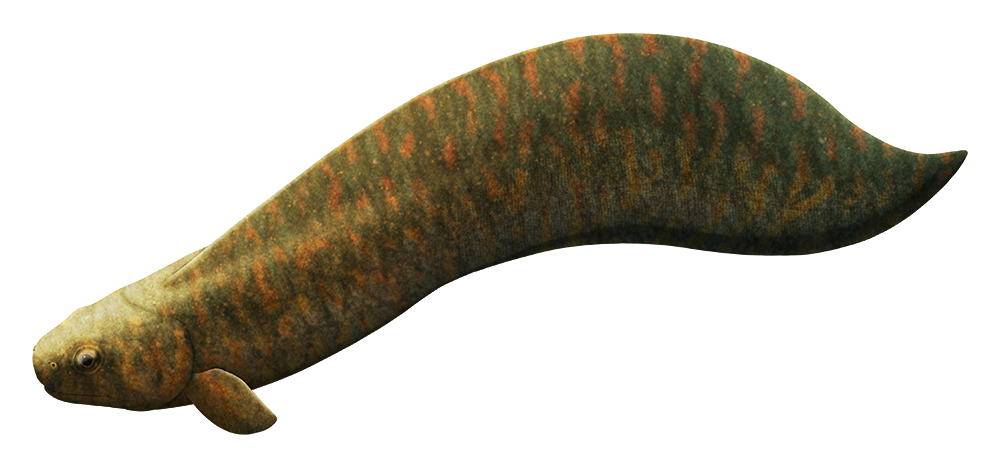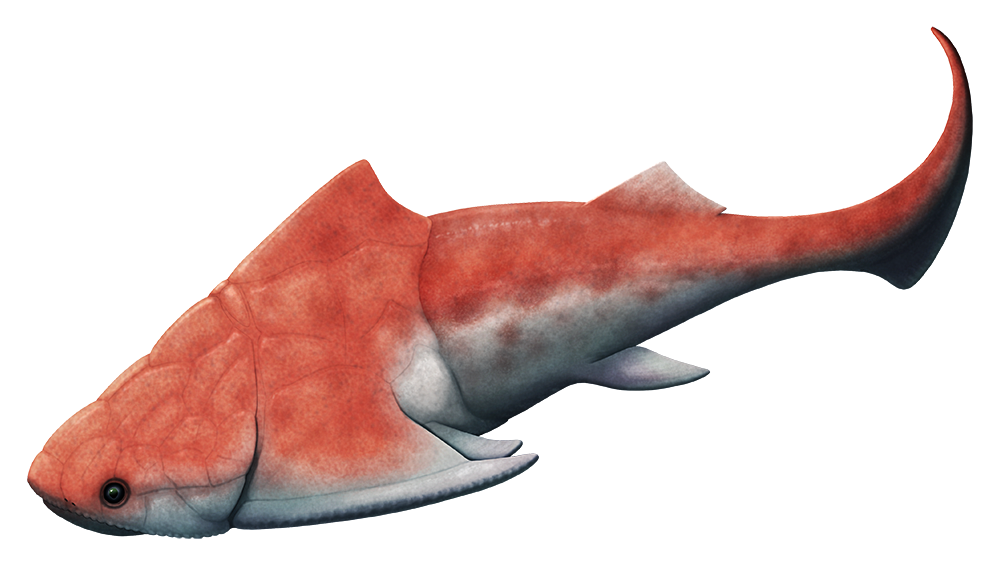The spinal column in tetrapods is made up of five different regions of distinctly-shaped vertebrae: cervical (neck), thoracic (upper back attached to ribs), lumbar (lower back without ribs), sacral (pelvic) and caudal (tail).
Non-tetrapod vertebrates like fish have spines that are much less differentiated, with just body and tail segments. So for a long time multiple distinct spine regions were thought to be something completely unique to tetrapods – a specialization developed early in their evolutionary history that served to better support their weight when moving around on land.
But one little fossil fish makes this idea… problematic.
Tarrasius problematicus lived during the early Carboniferous, about 345 million years ago, in shallow tropical marine waters in what is now southern Scotland. Around 9cm long (3.5″), it was an early type of ray-finned fish with a scaleless body and a long scaled eel-like tail with a single continuous dorsal fin.
And it also had some very unusual vertebrae for a non-tetrapod fish.
Its spine shows five different regions all corresponding to those seen in tetrapods, despite it not being closely related to them. But unlike early tetrapods Tarrasius was no land-walker, with its lack of hind fins indicating it was instead a streamlined fully aquatic fast swimmer.
It’s not clear why this fish developed such an incredibly convergent backbone, but it may have helped to stiffen its body so its more flexible tail could provide more efficient thrust, swimming like a modern tadpole.
It also suggests that a pre-existing genetic basis for regionalization – specific patterns of Hox gene expression – was actually an ancestral trait for all bony fish or jawed vertebrates. Tarrasius and early tetrapods may have just happened to specialize their spines in the same way for different purposes, with only the tetrapods going on to see long-term evolutionary success with it.


